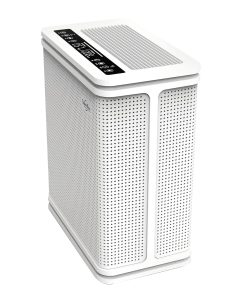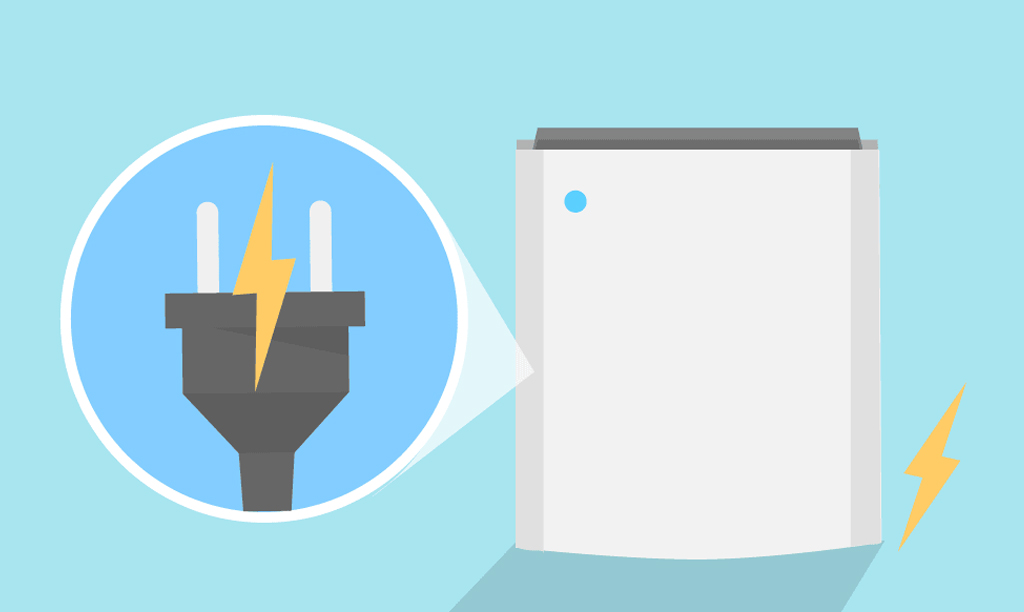In this post, we’ll talk about how much electricity a common home air purifier uses. We will investigate the variables that influence energy consumption, including the size, kind, and daily usage of the purifier. You will know more about how much energy air purifiers use at the conclusion of this post and be able to choose one for your home with confidence.
How Does a Home Air Purifier Work?
Air Filtration Process
Filtering and purifying the air in your home is how a home air purifier functions. Air is drawn in from the environment, processed via a number of filters, and then released back into the space.
A pre-filter that collects bigger particles like dust, pollen, and pet hair initiates the air filtering process. By capturing larger particles before they can pass through the finer filters, this pre-filter contributes to the other filters’ lifespan.
The HEPA (High-Efficiency Particulate Air) filter is the next filter the air goes through. Even tiny particles, such as allergies, germs, and viruses, are captured by HEPA filters. They are a popular option for people who have allergies or respiratory problems because of how well they remove these contaminants from the air.
Some air purifiers additionally contain extra filters to focus on particular pollutants, including activated carbon filters to get rid of chemical pollutants or odors.
Types of Filters Used
In home air purifiers, a variety of filters are employed, each with advantages and disadvantages.
The most popular and efficient type of filter used in air purifiers is the HEPA filter. They are capable of removing up to 99.97% of airborne particles as small as 0.3 microns. To preserve their effectiveness, they might need to be replaced sometimes.
In order to eliminate odors and chemical contaminants, activated carbon filters are frequently used in conjunction with HEPA filters. These filters function by adhering the contaminants to the carbon’s surface. Volatile organic compounds (VOCs) and other gaseous contaminants can be effectively removed by them.
Another type of filter utilized in some air purifiers is UV germicidal lighting. UV-C radiation, which is released by these lights and can kill bacteria, viruses, and other microbes. However, UV-C lights may not be appropriate for all air purifier types and are ineffective at eliminating bigger particles.
Air Purifier Components
Home air purifiers include numerous parts that contribute to their operation in addition to filters.
The air is drawn in and forced through the filters by the fan. The rate of air purification and noise level can typically be controlled by changing the fan speed settings.
The air purifier’s motor drives the fan and other moving components. The motor’s power rating may have an impact on how much electricity the air purifier uses.
You can modify settings on the control panel, including fan speed, timer features, and filter replacement reminders. Some air purifiers also have smart functions that let you operate them remotely via a smartphone app.
All of the air purifier’s internal parts, including the filters, are housed inside the housing, or casing. Its purpose is to hold the filters in place and block pollutants from leaking back into the room while yet allowing air to flow through.
Factors Affecting Electricity Consumption
Power Rating of the Air Purifier
An air purifier’s power rating has a significant impact on how much electricity it uses. The power rating is often expressed in watts (W) and can differ greatly between models.
An air purifier with a higher power rating will need more electricity to run. It does not necessarily mean, though, that the air purifier is better in purifying the air. Along with other elements like room size and air quality, the power rating should be taken into account.
Usage Duration
Your air purifier’s electricity consumption can be significantly impacted by how long you run it for. The air purifier will use more electricity if you use it continually as opposed to using it intermittently.
When you are at home and require the air purifier the most, such as during allergy season or when there are particular air quality problems, you can run it to reduce electricity consumption. Using a timer or other smart features to switch the air purifier on and off automatically can also help cut down on wasteful energy use.
Fan Speed Settings
The air purifier’s fan speed choices can have an impact on both how well it purifies the air and how much electricity it uses. In general, better air circulation and quicker purification rates are produced by higher fan speeds.
Higher fan speeds, though, also use more energy to run. When the air quality is pretty good or when you are not in the room, you might consider utilizing lower fan speeds if you are concerned about electricity consumption.
Room Size and Air Quality
An air purifier’s electricity usage can also be influenced by the room’s size and initial air quality.
A stronger air purifier could be needed in a bigger space to circulate and clean the air properly. Running a smaller, less effective air purifier in a bigger space could result in longer run times and more power usage.
The air purifier will also need to work harder and run for longer periods of time if the original air quality is poor in order to produce the ideal air quality. The usage of energy may increase as a result.


